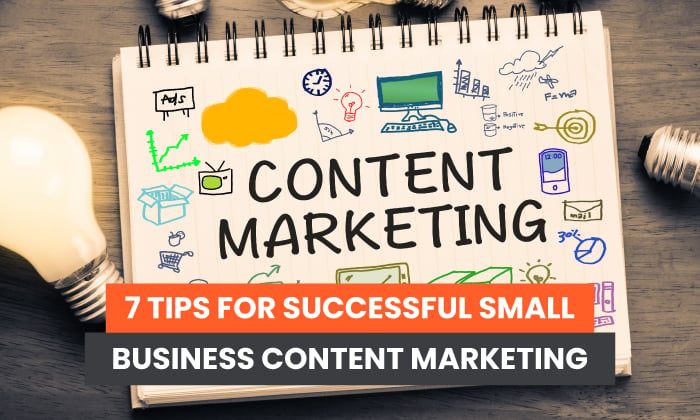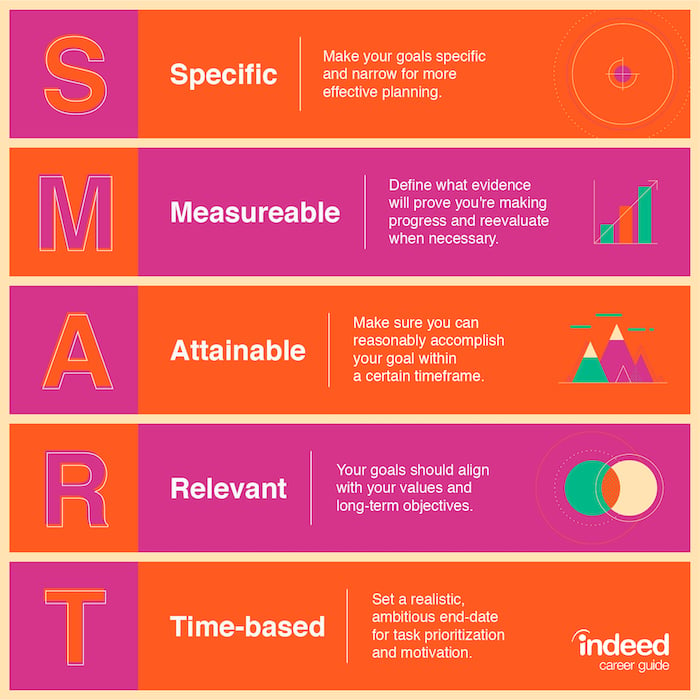
If you own a small business, content marketing is a tactic you should consider to grow your audience base and increase your brand’s name recognition.
Content marketing refers to the creation and dissemination of online materials that grow traffic to your website. Content types can include blogs, infographics, and whitepapers that are geared toward creating interest in your products or offerings.
In this post, we’ll break down why business owners of every size should deploy a content marketing strategy and how to create one.
Why Should Your Small Business Do Content Marketing?
Serving up useful, timely content allows your business to become a thought leader in your industry, increasing your business’s recognition and building consumer trust, respect, and loyalty.
Content marketing also allows you to identify your consumer’s pain points and speak to how your products solve those issues. This can lead directly to sales.
Another lasting benefit of content marketing is any evergreen content you create. This refers to assets that do not become outdated, like blog posts about the history of your industry or an infographic on how to complete a process that doesn’t change.
You can also find use in content marketing when you create assets that can be used across multiple channels and marketing campaigns. For example, if you write a blog post about the needs of a certain community, you can create a YouTube video on the topic and use the video in your blog post. Then you can link to the post and/or video on your social media channels. This saves you time and money, all while firmly establishing you in your field of expertise.
Small Business Content Marketing: 7 Steps for Success
The rest of this post will break down the seven steps every business owner should undertake to build a successful small business content marketing strategy.
1. Start a Blog
Blogging is a completely free way to market your services and capabilities, while simultaneously establishing yourself as an industry expert.
In fact, with 21-54 blogs on your website, you can drive 30 percent more traffic to your website.
In addition to driving traffic, blogs can help:
- boost your search engine optimization (SEO) rankings
- deliver increased value to your consumers
- increase exposure
- generate leads and increase conversion likelihood
Resources for Starting a Blog
To help you get started building your blog and giving a voice to your business, here are four resources to help make your blog dreams a reality:
- Choose the Best Blogging Platform
- How to Start a WordPress Blog in 3 Easy Steps
- 5 Steps to Take to Start Your Small Business Blog Today
- Neil Patel’s Guide to Blogging Consistently
2. Build a Social Media Presence on the Social Channels Your Audience Uses
If you’re actively involved in selling a product or service, you most likely have a social media presence of some variety.
Unfortunately, simply being present isn’t enough. You need to be active on platforms that your audience uses.
How do you choose which social media channels among the multitude of options are right for your brand?
Before you start posting anywhere, you need to identify your target audience. On social media, you’re not speaking to everyone; you’re speaking to a specific set of consumers with specific interests. After you’ve established who you’re speaking to, you must determine how to reach those individuals.
You can use a variety of strategies to determine where your audience is active.
- Aggregate all existing consumer data to see where your audience is spending their online time.
- Visit your competitors’ social profiles to see where they have the most active users
- Use tools like Google Analytics to determine consumer online behavior.
These three steps can help you begin to identify where your target audience is active and begin delivering content to them on those particular platforms.
Resources for Building a Facebook Presence for Your Small Business
- How to Create a Facebook Business Page in 7 Easy Steps
- How to Create the Most Effective Facebook Business Page
- Setting Up Your Business on Facebook
- Facebook 101 for Small Businesses: How to Promote Your Business on Facebook
3. Start an Email Newsletter
Email newsletters are an excellent way for small businesses to wade into the world of email marketing. They alert your readers to new products, upcoming events, industry-related news, and any other notable business-adjacent happenings.
With historically high return on investment (ROI), for every dollar spent on email marketing, expect an average ROI of $42. Email marketing is an excellent tool for small businesses to use. In addition to sheer ROI, email newsletters can help small businesses:
- build goodwill with your audience
- promote sales, deals, and coupons
- increase customer value
Resources for Starting an Email Newsletter
- Small Business Email Marketing Strategy & Tips
- How to Write High-Converting Email Newsletters
- 10 Effective Ways to Get More Email List Subscribers
- Newsletters are Smart Marketing for Small Businesses
4. Create Content Corresponding to a Basic Customer Sales Funnel
Finding the right consent to correspond to your consumer’s needs is key to getting them to actually make a purchase.
With a basic customer sales funnel and an accompanying content strategy, you can identify which stage of the funnel your customer currently occupies and deliver them content that speaks toward that stage.
A marketing funnel is the process people go through to reach the conversion phase. The funnel includes everything from getting introduced to your brand until they convert. Most marketing funnels have four steps:
- Attention: a would-be consumer sees your ad, social media post, or learns about you through word-of-mouth
- Interest: consumer wants to learn more
- Desire: consumer wants to convert
- Action: consumer acts (buying your item, subscribing to your email newsletter, etc).
To align this four-step process with your content creation, be sure you’re targeting customers within the various stages of the funnel with relevant content. For example, you wouldn’t want to overburden a potential consumer in the attention phase with an in-depth content asset.
Resources for Creating a Basic Sales Funnel/Content Journey
- How to Use Content Mapping to Create Effective Content
- How to Create a Customer Journey Map (Even if You Have No Idea Who Your Customers Really Are)
- How to Create Content for Every Stage of the Buyer’s Journey
- How to Create Content for the Stages of the Buyer’s Journey
5. Build a Content Calendar
While it’s important to do the work to establish your buyer personas and to deliver them the content they need during their respective buyer’s journey stage, it is also important to keep delivering relevant content in a cadenced fashion.
Instead of scrambling to create content in a reactionary manner, build monthly calendars that include social posts, blog posts, emails, and whatever other content you would like to create that month.
Not only does this strategy keep you organized, but it also allows your readers to get comfortable with a schedule of content and to build continued trust and familiarity with your brand.
Resources for Building a Content Calendar
- How to Develop a Marketing Calendar That Will Streamline Your Campaigns
- How to Build a Content Calendar (Plus a Free Template)
- What is a Content Calendar? And How to Build One
- The Complete Guide to Choosing a Content Calendar
6. Create a Variety of Content Types
In a competitive landscape, it’s important to stand out however you can. One way your small business can achieve this is through your content marketing strategy.
Do a deep dive into both your existing content and your competitors’ content. See what is resonating with audiences and what isn’t. Once you’ve established efficacy, it’s time to try to replicate that success with your upcoming content.
Then it’s time to get creative. Don’t be limited by what already exists. Take your latest blog post and turn it into an infographic. Take your infographic and turn it into a whitepaper. Take your white paper and make it a series of quote-centric social tiles.
The content creation possibilities are limitless.
Resources for Building a Diverse Content Library
- How to Use Multiple Content Formats to Diversify Your Traffic
- 40 Different Types Of Content You Can Create For Your Blog
- 7 Content Types That Gain the Most Engagement and Links
- Creating a Diverse Content Marketing Strategy
7. Mine Customer Reviews and Testimonials
97 percent of local consumers use online media, including reviews, to search for local services. If you’re a small, local business, that means your reviews are driving your business.
Make those reviews work as hard as you do by bringing them to life through social posts and testimonials on your website and blog.
By sourcing the best quotes and ascribing a face to the name, you make that review much more personal, creating a consumer-generated ad that speaks for itself.
Resources for Building Effective Customer Testimonials
- 14 Testimonial Page Examples You’ll Want to Copy
- Templates to Post Your Customer Reviews
- Create Attention-Grabbing LinkedIn Testimonial Graphics in Seconds with Canva (Free)
How to Create a Small Business Marketing Strategy
- Fine-tune your buyer personas
Building buyer personas allows you to establish a better understanding of your audiences and their respective pain points. By determining who is purchasing your products, you can assess which content they need and when.
- Identify valuable consumer content
Consumers don’t want content for content’s sake. They want content that can solve their problems. After you’ve identified buyer personas, work to identify what content assets can best serve your buyers’ unique needs.
- Set business goals
Setting business goals that align with your marketing strategy can feel overwhelming at first. Use the principle of SMART goals to make your benchmarks reasonable and reachable.

- Solidify distribution channels
You’ve got your content ready to go and your goals ready to measure. It’s finally time to start sharing your content. While it would be nice if every piece of content performed well on every channel, that’s sadly not the case. Determine which pieces of content are appropriate for which channel to ensure success and reach.
- Establish cadence
It’s not good enough to deliver one piece of content and rest on your laurels. You must establish a cadence that regularly delivers quality content to your consumers.
Small Business Content Marketing Frequently Asked Questions
Why do small businesses need content marketing?
Even though you’re a small business, you most likely have big competition. To make your business stand out among the crowd and grow your audience, you need a content marketing strategy that allows you to demonstrate your value to future and current consumers.
What are some examles of content marketing?
Examples of content marketing include blog posts, infographics, social media campaigns, podcasts, white papers, ebooks, downloadable PDFs, and YouTube videos. Any type of media that is free to access and brings in leads to your website is content marketing.
What is the best content marketing strategy for a small business?
Having clearly delineated buyer personas is vital for a strong, small business content marketing strategy. Without these personas, your content won’t have clear direction or purpose, resulting in low audience interaction.
How should small businesses create content for their content marketing strategy?
Small business content marketing is all about solving for the buyer’s pain point. After you’ve identified personas, all created content should center both around the respective pain points and what point the buyer is within the funnel.
Small Business Content Marketing Conclusion
While your small business content marketing may be minuscule, it doesn’t mean that you can’t undertake most, if not all, of the above eight strategies.
After successfully defining your buyer personas, you’re well on your way to developing a winning content marketing strategy that can grow your audience and increase overall sales.
What’s the most effective strategy you’ve seen for small business content marketing?
from Blog – Neil Patel https://ift.tt/3jqvgqE

No comments:
Post a Comment